2024 Hyundai Santa Fe First Drive Review: Adventure Time

Love It | Leave It |
|---|---|
Cool looks | No more PHEV |
High-quality interior | More of a mild off-roader |
Family-friendly features | Lots of features locked to top model only |
Goodbye, curves.
Since the Santa Fe kicked off Hyundai’s SUV lineup here in North America almost 25 years ago, never has it so closely resembled the shipping containers it arrived in. With Tucson and Palisade finding success on either side of it, the Santa Fe had a hard time standing out. For 2024 that’s no longer the case, as the Santa Fe has traded its sleek looks for straight lines and big volumes. The change highlights a shift in attitude; not towards rock-crawling, but as a smarter, more useful, family-hauling box on wheels.
What’s new?
I don’t need to tell you that blocky is in—looking at you, Land Rover Defender, Lexus GX, and the Ford Bronco, amongst others—but to call the Santa Fe a radical departure is an understatement. Hyundai has worked to make the SF its own thing though, dotting this squared-off shape with a bunch of H-shaped lighting elements. The oversized arches and shortened front overhang give it a strong stance, while the blacked-out pillars accentuate the additional length. It looks ready for the trails in a way nothing else in the lineup does, shy of the Santa Cruz pickup.
That being said, the chopped tail looks unfinished to these eyes. Blame the low-set taillights, which draw attention to the large expanse of mostly flat surface above. There is a method to Hyundai’s madness mind you: the tailgate aperture is one enormous square.
Hyundai has yo-yoed back and forth between two- and three-row versions of the Santa Fe for a few generations now. The outgoing model switched back to playing deuces to give the Palisade its time in the spotlight. Now that the flagship has established itself—not to mention the Tucson’s own growth spurt—the fifth-generation Santa Fe isn’t just back to being a three-row; it’s exclusively available that way. The styling change makes it look larger than it is; while the wheelbase is up nearly two inches (50 millimeters), the overall length increase is less than that over the outgoing model (1.8 in / 45 mm). At 190.2 inches (4,830 mm) long, the new Santa Fe is still nearly six inches (190 mm) shorter than the Palisade.
What hasn’t changed—at least, too much—is the engine bay. Two powertrains will be available in North America this year, both carryovers from Santa Fe IV. The pure-gas choice is the torquey 2.5-liter turbo-four, making 277 horsepower and 311 pound-feet of torque, once again funneled through an eight-speed dual-clutch transmission. The hybrid model will also return shortly after the initial launch, its combo of 1.6-liter turbo-four and electric motor producing 231 hp and 271 lb-ft; increases of 5 and 13, respectively. A six-speed automatic handles shifting duties. Both the 2.5-liter non-turbo engine and PHEV powertrain are gone.
Interior transformation
As dramatic as the changes outside are, the Santa Fe cabin is just as much of a departure. Gone is the curvy, twin-pod dashboard and tall center console, replaced with—you guessed it—a whole bunch of straight lines. The upright dash now houses a standard dual-screen setup, a wide H-shaped bit of metallic trim acting as the visual anchor. The in-line air vents mimic the H of the headlights too, just in case you didn’t notice a theme of some sort. Lower down, a combination of physical controls and a touchscreen handle climate and audio needs. Hyundai has employed the same stubby column-mounted shifter here as in Kona, and that allows for a low, wide center console with plenty of storage and, in the top Calligraphy trim, two wireless chargers.
The Calligraphy is what I spend most of the day in, and it’s had a definite glow-up. Soft-touch materials abound, from the pleasantly squishy armrests, Nappa leather seating surfaces, and suede-like headliner. As much as I adore the Forest Green color scheme, with its deep earthy tone even extending into the door jambs, the cream elements are just asking to get dirty. I’m not sold on the faux-wood trim either, which looks and feels unconvincing. A little texture would go a long way here.
Front seat comfort is good, even if the top blocks of the seats on these early-production models are already slightly misshapen. Similarly, the second-row captain’s chairs offer up plenty of space and comfort, along with plentiful door-side storage for drinks and knick-knacks. Every other trim utilizes a second-row bench seat. The third row experience is solid for adults, with an even 30.0 inches (761 mm) of legroom.
Smart family features
Beyond the reintroduction of the third row, it’s the clever details and useful tech that add to the new Santa Fe’s appeal. The center console lid opens from both the front and back, while the lower section slides out towards the second row. It’s a simple setup to make handing items back easier (and safer). Need to load something onto the roof? Lockable, hidden handles are built right into the C-pillars. The Calligraphy makes short work of long items in the tailgate too, thanks to easy-access buttons to remotely fold the second row. Speaking of the tailgate, not only does it offer a few pre-set opening heights as well as the ability for owners to set a custom one, it has two selectable speeds. And since that opening is so enormous—almost 25-percent more than before—you’ll want to take advantage of it.
Other bits are plucked from elsewhere in the Hyundai empire, such as the full-recline (with leg rest) driver’s seat and rear-seat Quiet Mode. Did Timmy bring home a gift from a party where you definitely saw a few coughing kids wiping their noses on their shirts? No worries: the Calligraphy has a UV-C sterilizer cubby above the dashboard: pop anything in there for 10 minutes and it’s good to go.
Hyundai’s new ccNC infotainment system is pleasantly simple to use, and finally offers full wireless phone mirroring on all versions. Every Santa Fe features the dual 12.3-inch screens, and we found the driver-side one pleasantly customizable. Plenty of driver assists are standard, including full-range cruise control, but you’ll need to move higher up the trim walk to unlock things like Highway Drive Assist or Hyundai’s useful blind-spot camera setup.
Smooth progress
I’ve gone this long without talking about how the Santa Fe drives. That’s because—and I mean this in the best way possible—it doesn’t really matter.
The fifth-gen Santa Fe is the four-wheeled definition of “agreeable.” It does nothing wrong, nor does it display any stand-out drive qualities. The Hyundai goes, turns, and stops as you’d expect. Even the dual-clutch transmission blends into the background, showcasing none of the low-speed jerkiness inherent to the breed. The 2.5’s easy-access torque makes merging a hassle-free procedure, and at highway speeds, the surprisingly aero-friendly shape makes for little wind noise.
From the driver’s seat, there is a subtle disconnect between the view forward and how the Santa Fe responds to steering inputs. The wide, flat hood gives the sense of a sturdy SUV, not to mention an easy understanding of where the vehicle ends. But through BC’s Sunshine Coast region the Santa Fe is more agile than big brother Palisade.
A short jaunt in an XRT along a logging road is short on surprises. Okay, on asphalt it might ride a little better than the Calligraphy because of those taller sidewalls on the 18-inch wheels—the Calligraphy has big ol’ 21s. The XRT does gain over an inch of ride height (8.3 in / 212 mm), so it does boast the best off-roading angles of the bunch: 19.3, 21.8, and 19.1 for approach, departure, and breakover, respectively.
2024 Hyundai Santa Fe pricing and value
America and Canada take two very different approaches to the Santa Fe. America offers front-wheel drive as standard on all but the XRT, which is locked to both AWD and the 2.5T. All-wheel drive is an additional $1,800 on the rest of the models; the hybrid engine, $500 more. Pricing starts at $35,345 including destination; the XRT tested here would ring in at $41,995 while the Calligraphy would be $50,165 (including the $470 Serenity White paint).
Canada makes both AWD and the hybrid standard equipment—at least to start. Both of the two lower trims stick to the hybrid ($42,999 CAD Preferred and $46,999 CAD Preferred with Trend Package), while the remaining three models only use the 2.5L. The XRT sits in the middle at $48,999 CAD; the Ultimate Calligraphy tops out at $55,499 CAD.
In both markets, there will be dozens of dealer-installed accessories.
Final thoughts: 2024 Hyundai Santa Fe First Drive review
The 2024 Hyundai Santa Fe succeeds in giving Hyundai’s original SUV a new lease on life. Whether or not it’s as ready for trails as its styling suggests is almost elementary: it should handle most needs from most buyers just fine, and the squared-off looks translate to plenty of practical space for passengers and cargo. Chock full of smart, family-friendly features, the Santa Fe should appeal to those looking for a right-sized three-row.

Kyle began his automotive obsession before he even started school, courtesy of a remote control Porsche and various LEGO sets. He later studied advertising and graphic design at Humber College, which led him to writing about cars (both real and digital). He is now a proud member of the Automobile Journalists Association of Canada (AJAC), where he was the Journalist of the Year runner-up for 2021.
More by Kyle Patrick



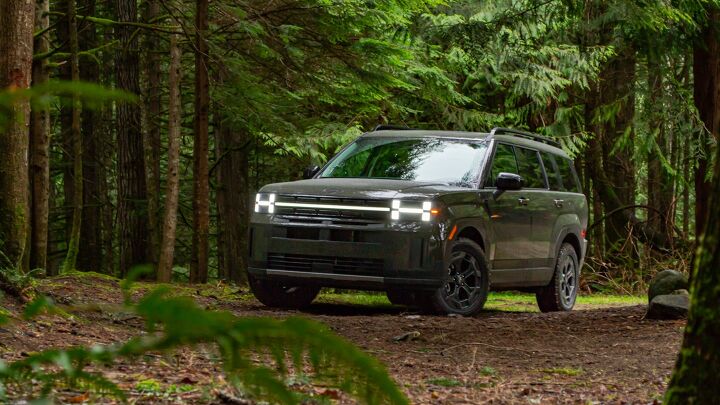

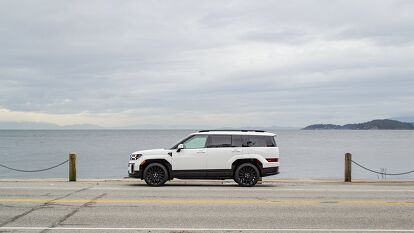


















































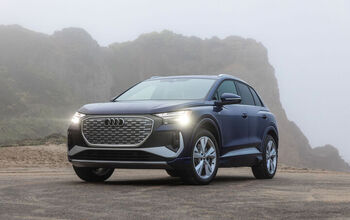

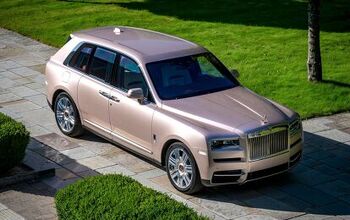
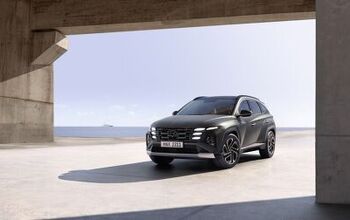
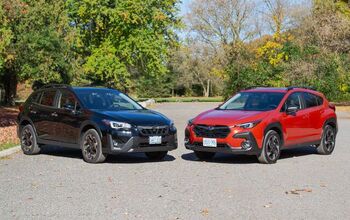


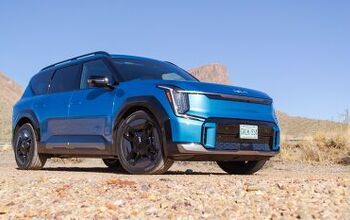



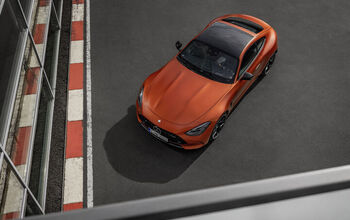


Comments
Join the conversation
Looks functional, but no powertrain I'd want. Hyundai made an excellent 6 speed automatic in our 2011 Sonata. Why this fascination with DCT's of late? Sorry, I like the looks but no sale!